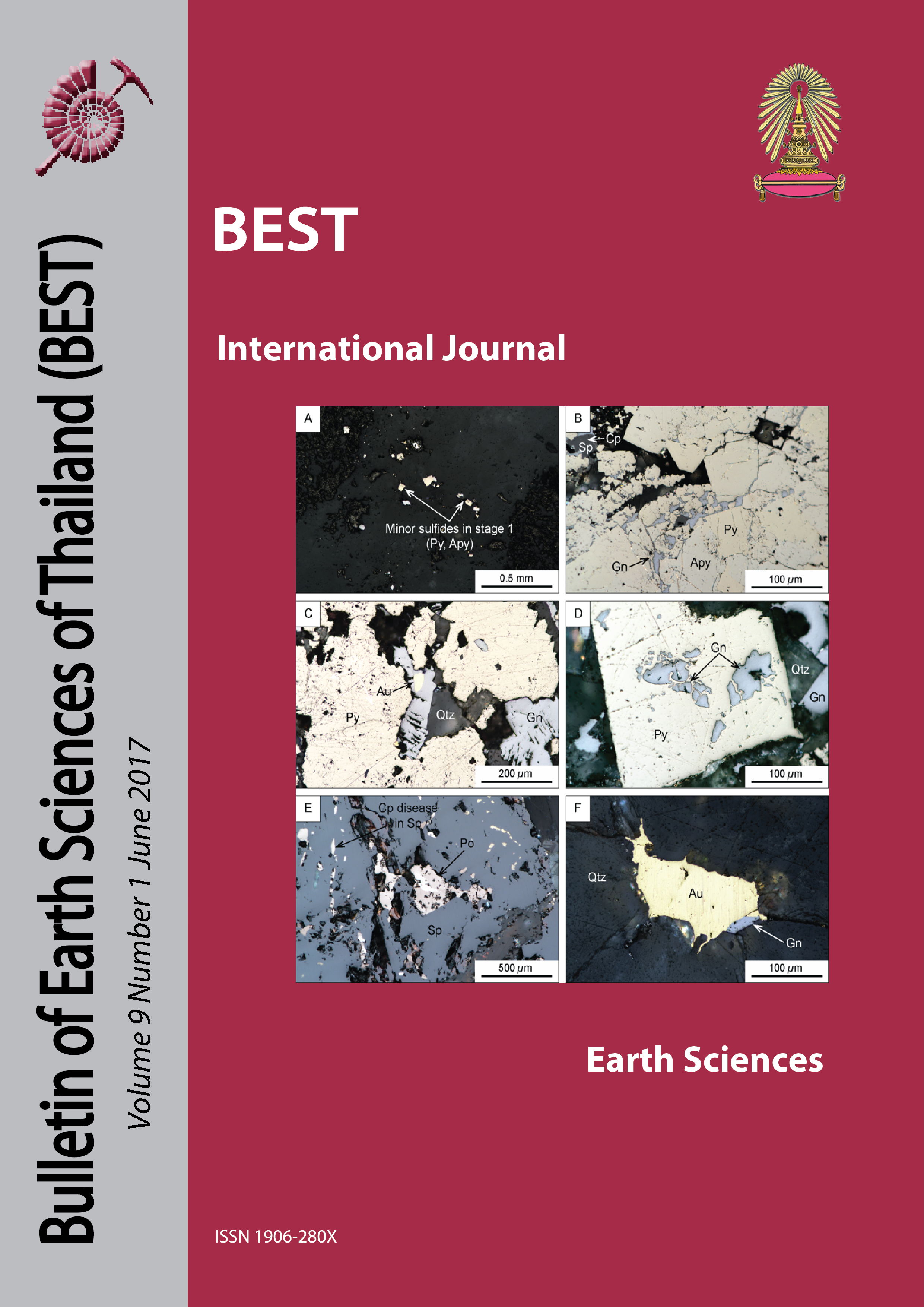Seismic Site Classification and Soil Amplification Assessment of Chiang Rai City, Northern Thailand
Main Article Content
Abstract
One of all the natural disasters that cannot accurately predict is earthquake. There are a lot of histories that show many earthquakes around the world since the past to the present. Each earthquake made many damages, large or small area, related with the intensity of earthquake and the properties of area such as type of soil, rock and building etc, like the biggest earthquake on May 5, 2014 that located in Amphoe Pan, northern of Thailand. This earthquake affects economic, society and lives because it is in big city, Amphoe Pan, which consists of many houses and buildings. Many researches show the soil responds and sensitive with strong earthquakes. Moreover the property of Amphoe Muang, changwat chiangrai area is covered soft soil layers. So soil amplification is one of the most important factors that controlling the damage in areas when was strong earthquakes. This study, soil amplification is analyze forty-six sites in Amphoe Muang, changwat Chiangrai, using geophysical data, shear wave, and geotechnical data, soil profile, to consider with SHAKE 2000 software. The result of study area, the maximum value of amplification is 3.58 g and shear wave velocity of this study is 200 to 562 m/s. Finally, there are accurate soil amplification and average shear wave at 30 depths map of the result.
Article Details

This work is licensed under a Creative Commons Attribution-NonCommercial-NoDerivatives 4.0 International License.
Copyright © 2008 Department of Geology, Faculty of Science, Chulalongkorn University. Parts of an article can be photocopied or reproduced without prior written permission from the author(s), but due acknowledgments should be stated or cited accordingly.
References
Anantaasech, C., and Thanadpipat, C. 1985. Characteristics and engineering properties of subsoils in intermontane basin. Thailand Engineering Journal 28, 2:101-106.
Borcherdt RD, Wentworth CM, Janssen A, Fumal TE, Gibbs JF (1991) Methodology of predictive GIS mapping for special study zones for strong ground shaking in the San Francisco Bay Region, CA. Proc 4th Inter Conf Seis Zona, 3:545–552.
BSSC, 2000. NEHRP Recommended Provisions for seismic Regulations for New buildings and other Structures, Part1: Provisions, FEMA 368, Federal Emergency Management Agency, Washington, D.C.
BSSC, 2003. NEHRP Recommended Provisions for seismic Regulations for New buildings and other Structures, Part1: Provisions, FEMA 368, Federal Emergency Management Agency, Washington, D.C.
Department of Mineral Resources (DMR), 2010. Geology of Chaingrai, 1st ed. Bangkok, Thailand.
Palasri, C. and Ruangrassamee, A. 2010. Probabilistic seismic hazard maps of Thailand, Journal of Earthquake and Tsunami, Vol. 4, No. 4 (2010): 369–386
Pattararattanakul, P. 2003. Liquefaction Resistance of Sands in the Northern Part of Thailand.Published D.Eng thesis, The Department of Civil Engineering, Faculty of Engineering, Chulalongkorn University.
Srisoros, W., 2003, Seismic Microzonation of Chiang Mai City Using Microtremor Observations, M.Eng. AITThesis, Asian Institute of Technology, Thailand.
Thitimakorn, T. and Channoo, S. 2012. Shear Wave Velocity of Soils and NEHRP Site Classification Map of Chiang Rai City, Northern Thailand. Electronic Journal of Geotechnical Engineering. 17, 2891-2904


